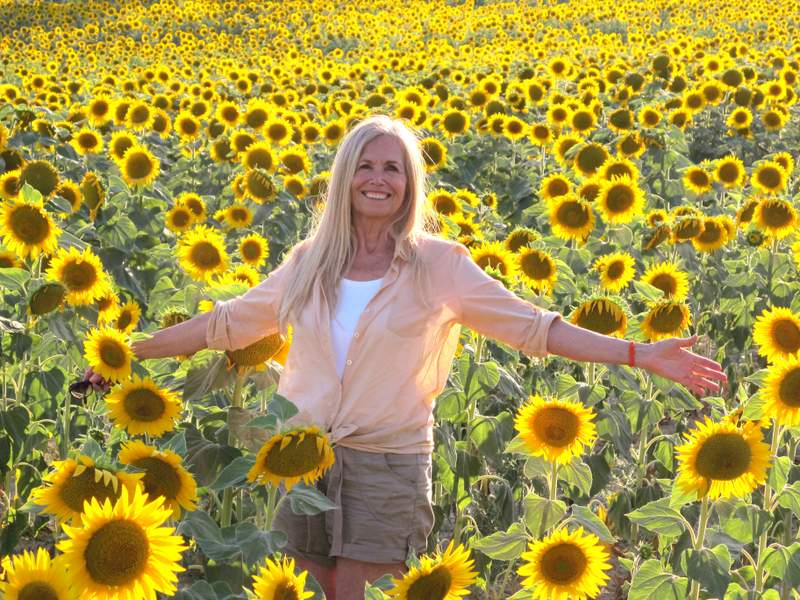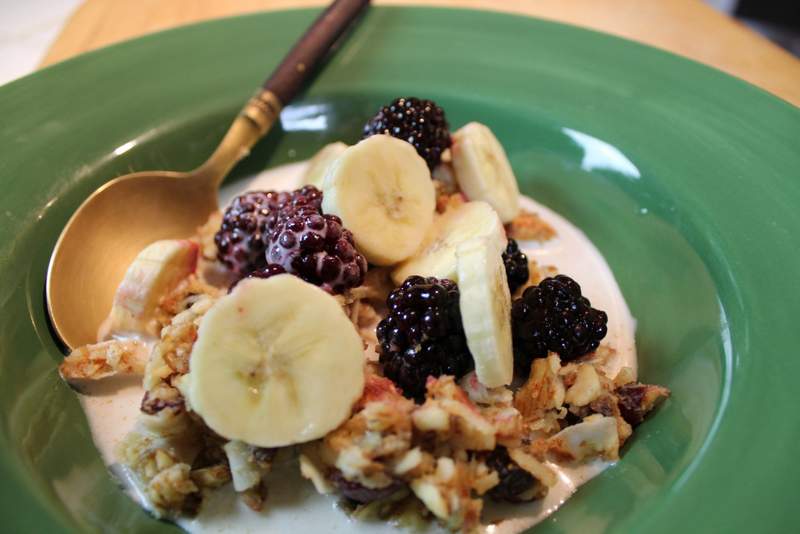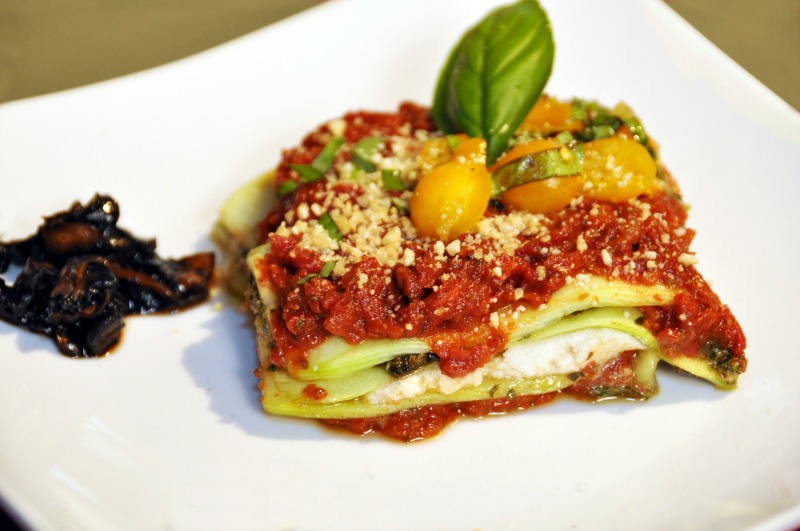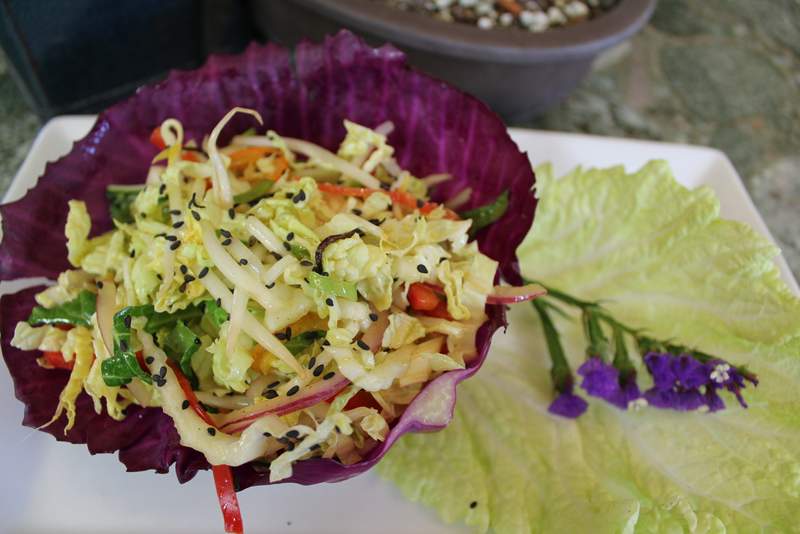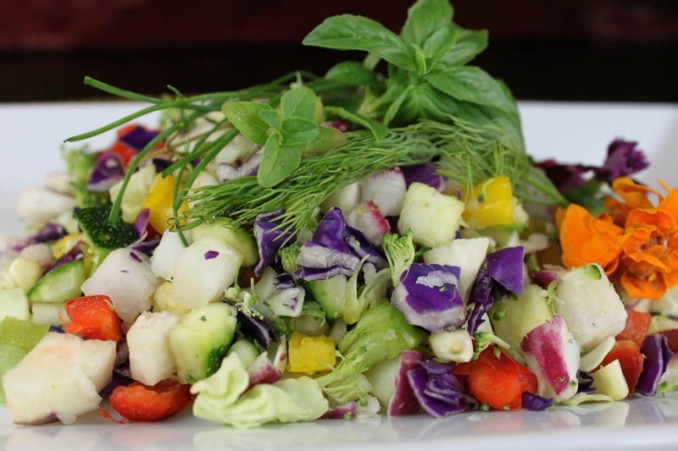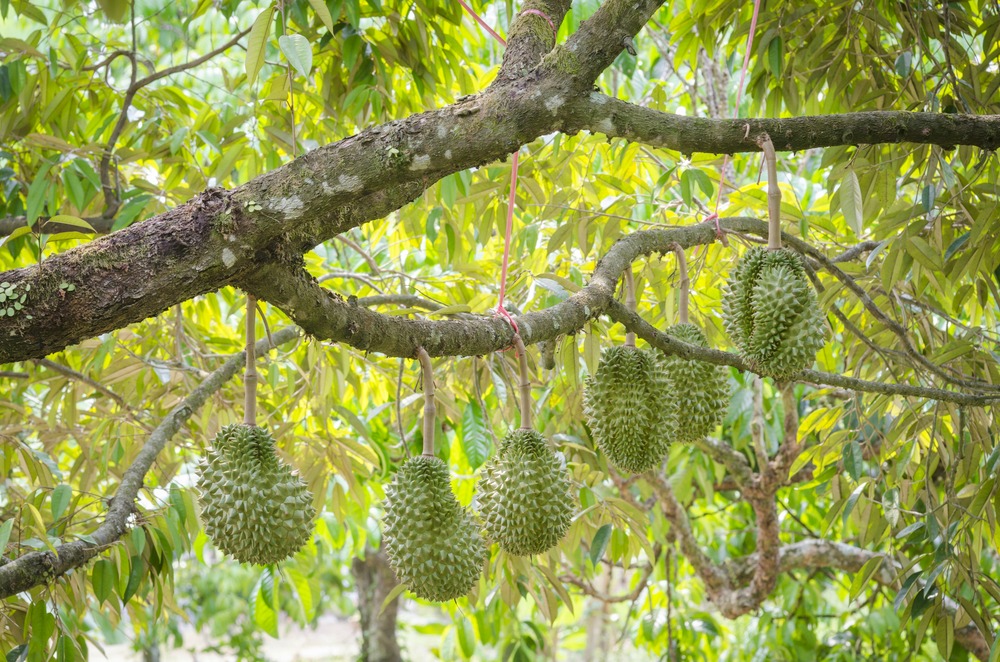
Last time around, we discussed how Mimi Kirk, winner of PETA Prime’s first “Sexiest Vegetarian over 50” contest, stepped up the game from vegetarianism to raw veganism at 69, why you can still be unhealthy as a vegan or vegetarian, tips to start incorporating raw foods into your lives, and more.
We’ll pick up today from where we left off and cover why Mimi thinks dairy isn’t the health food the public claims it to be, her take on protein, and her experiences of international raw cuisine during her travels in exotic countries from Spain to India.
Oh, and we’ll also talk about Mimi’s 5 favorite exotic spices, tips to stay healthy on the road, her take on the raw food movement, and yes, her ridiculously simple and divine raw recipe you can make anywhere, anytime.
Let’s get back to it as I continue the interview with Mimi, the 75-year-old sexy and energetic vegetarian, who’s probably more energetic than your 20-year-old self.
This is a transcript of the video interview. Please note that this transcript has been lightly edited for clarity.
Q: Last time round, we talked about how people are still suffering from osteoporosis, even though we are consuming enormous amount of animal protein. Let’s continue this discussion.
Mimi Kirk: Okay, so let me just say this one thing about not eating dairy and cheese any more.
In America, here in the United States, they tell us that dairy is very good for us: Dairy prevents all kinds of diseases and is good for our bones. But United States has one of the the highest cases of osteoporosis in the world. So maybe milk is not doing us that much good.
I feel like I’m getting plenty of protein from almond milk and the nut milks I use, greens, hemp seeds and chia seeds. I don’t feel I’m protein deficient.
People are told they need all this protein, and they put that much protein which the liver cannot even process. So it’s not that good. You have to have protein, but not as much as they tell us.
I think it’s the manufacturers of dairy and the people who make money off of this who are advertising that dairy is good for us.
And milk has lots of hormones. Cheese is made out of milk, so it’s best to stay away from cheese and find alternatives. My alternatives are the nut cheeses, because they are delicious, and very easy to make.
Q: Now that we have addressed the topic of dairy and cheese, let’s focus on raw cuisines around the world. You wrote “Living Raw Around the World” and have traveled to over seven countries, from Spain to Thailand. Can you elaborate on your travel experiences and address which country’s style of cooking influenced you the most?
Mimi Kirk: I’ve always liked Indonesian and Thai food. I just love everything about the way they cook their food.
But it’s so interesting to travel around the world and find countries where people are health conscious, where I can see the farmer’s markets have the same thing. A tomato is a tomato. A zucchini is a zucchini. It might be called by another name, but it’s the same food.
You’ll find different fruits in Thailand, and you’ll find some odd things, but mostly the staples are all pretty much what we’re all eating. It’s just that every country, and province even, makes the food a little differently.
The fun part is taking something like a zucchini and making international dishes, from Italian to Thai. The secret that makes food taste different really is the spices.
Every country has its own spices that remind you of that country. And if you take the same vegetables and use those spices, you’re going to have a different dish. That’s the one thing I learned.
I like all the food everywhere. It’s hard for me to pick what I like best, because my taste buds change all the time. Sometimes you’re in the mood for a certain thing and then that’s what I prepare.
If I’m in the mood for Italian, I take out my Italian spices. I have this whole arsenal of spices in my kitchen and all these wonderful foods I can prepare. All I need to do is buy the basics, and then when I get home, I know what to do.
If I’m in the mood for Asian, I’ll make an Asian sauce, like a peanut sauce, and pair it with finely chopped raw vegetables. The sauce is unique because I use almonds and top them onto a peanut sauce. It’s just delicious and gives the Asian dish a native flavour.
All the food I eat is like that, really. It’s just out of what spices I feel like using at the time.
Q: Can you pick five of your favorite spices?
Mimi Kirk: Well, I think basil is one of my favorites. Basil could be used in all those dishes I talked about.
Oregano is also an amazing herb.
I’m very hooked on cardamom lately. Cardamom is used in desserts throughout Asia and India, and I use it my smoothies. I use it in bread and crackers sometimes. I love cardamom. It’s one of my other favorite spices that I like.
I also like a little pepper. I like things a little spicy sometimes, so I like the little pepper flakes. I mix the pepper flakes or any kind of dried pepper flakes are really good for me.
And then, let’s see, for the fifth one, I would say, as far as the spice goes, I would like vanilla bean. Since I make a lot of smoothies, I use vanilla in all of them.
Cinnamon is also very good; I use a lot of cinnamon in my cooking. Cinnamon is very healthy.
Turmeric is another one. It’s an amazing healthy and anti-inflammatory root, similar to ginger. Those are two things that could be used in cooking and juicing.
Those are more than five, but those are my favourite herbs. By the way, all these herbs have health benefits. They’re not just for taste. They really do stuff to your body.

Q: In terms of traveling, it’s hard to be vegan, let alone be raw vegan when you’re traveling. So what do you suggest readers do when they travel?
Mimi Kirk: I’ll always try to make something I can take with me. I’ll make some veggie burgers, and I put them on a cabbage leaf. They hold up really well. I’ll make four or five of them before I even get on the plane.
Secondly, I go to farmers’ markets during my travels so it’s always easy for me to find fruits, beautiful tomatoes, some great olive oil, and beautiful basil. In farmers’ markets, I can always find something that I can just eat fresh right there.
Mainly, I’ll eat salads when I’m in a lot of the countries, because that’s easy; you can find something like that anywhere. Occasionally, I might have some cooked vegetables.
But even in Italy, I can order a plate called Pinzimonio, which is a big bowl of raw vegetables. And they bring out this beautiful olive oil that you dip the vegetables in. So I am able to find something that’s raw in every country.
In Thailand, I can say, “What vegetables do you have in the kitchen?” Then I say, “Don’t cook them. Just chop them up for me and give me some kind of dressing on a plate.” So then I can have all their raw vegetables. I really haven’t found too much trouble.
I can always find things to eat. I must say, because I like to eat so much, it’s more tempting to eat their other food. I was in Italy on this last trip, and I ate some pasta. The next day I woke up and my hands were so stiff because of the gluten, so I know that doesn’t work for me. I’m back to eating the food that I like.
I talked about making spaghetti out of zucchini. I have a little machine that’s called the “spiralizer,” there’s a picture of it in my first book. When you put the zucchini in and you turn this handle, then it comes out looking like spaghetti.

I also have a little one, about this big, that I can put in my suitcase. So I can always bring that with me. If I’m staying at someone’s house, I could make raw pasta.
It is a little more difficult traveling, I must say. But there are always beautiful fruits and things to try. I love raw because I love the taste of fresh vegetables. I could scrub a carrot and eat it as food right now.
Traveling is the same thing as going out when you’re at your home country. You know they’re not going to have food that you like there. So I’ll either eat before, or I eat when I get home.
If there are some raw vegetables when I’m out, I’ll eat that. But otherwise, I eat less when I go out. I don’t feel good eating cooked and processed foods, and so I don’t eat them.

Q: Which countries do you think are the most and least progressed, in terms of adopting raw foodism?
Mimi Kirk: Well, the one I thought would be least is Germany. And Germany is actually the most progressive country, in terms of adopting raw foodism, in my opinion. There is a huge German population that eats the raw food diet. And I’m very well known in Germany; people recognize me on the street, which is so interesting.
I had heard there was a very big German group of people who eat raw foods. I found cheeses there; I found raw foods there; I found all kinds of things. So it’s there.
There is an amazing raw food restaurant in Berlin, called “La Mano Verde“, which is raw and vegan. They make delicious foods, some of the best gourmet raw food I’ve had. And they are very up and coming in the raw food area.
The least I think would be Spain. Most Spaniards are still meat-eaters. There is some raw food movement there, but not that much.
It is also hard to find raw food in India, because Indians cook everything. They don’t eat raw foods there, so India is very slow.
But I have fans all over the world, in places I’ve never even heard of, way across the continent, where you wouldn’t even know how they could find ingredients to make raw food.
So raw foodism is growing. When I first became a vegetarian in the early ’70s, you know, raw foodism wasn’t very popular. People didn’t even know what a “vegan” was.
But now, raw food is spreading very quickly around the world. It’s very exciting to see that it’s happening. I spoke in every country I was in, and I had standing room only. So people are interested in having their raw food.
I was at a raw food restaurant in Greece, and then I went to one in the islands and spoke. Everywhere I went, people were interested in finding out about raw food. That’s in the seven countries I went to, all of them.
Q: Even in Asia?
Mimi Kirk: Yeah, oh, yeah, in Thailand, there was a very big group that got together. Then there was a small group of families that I stayed with, that were very interested in the raw food. In fact, if people visit me, they love my food. They just can’t believe how good it is.
I think people all over the world are starting to understand. The other interesting thing is chefs are starting to take courses to learn how to make raw food, because it’s so unique and creative, and a good chef wants to know how to do everything. There are so many chefs taking raw food cooking classes today, I am quite amazed, all over the world.
Where I studied, the Matthew Kenney Culinary School in Santa Monica, there were people in our class from all over the world. I think that’s quite amazing that that’s spreading. Now young people from all over the world want to learn how to make this food.
Because, you know, when you see your family sick, you want to help. I lost my family members early, a sister at 55 with a heart problem, a brother at 29 with leukemia, two other sisters with cancer. My dad had Parkinson’s disease and diabetes. My mom lived to an old age, but she was on a lot of medications.
When you see your family’s health history, you start thinking, either you go in that direction or you agree to not go in that direction. You have a choice.
There is a choice, because genes play a small part; they don’t play everything. You could do much better for yourself if you start eating healthy, and not have to go the way of the family, because I am living proof of that. I didn’t go the way of the family.
I saw it starting to happen when I was 69, but I responded to it.
I think that if you buy into the fact that you’re “old,” you start spiraling down. I’m not trying to be younger or fight aging; I just want to be healthy. That’s all I’m looking to be.
I’m not concerned about my looks. I’m more concerned about my health inside, so I can have my energy to travel. I’m going to be going to Mallorca, Spain, to speak. I’m going to London to speak this year. I’m going to Holland to speak, and again, to Germany this year.
I love traveling around the world; I want to be able to do that, so I have to stay healthy.
Q: This is really awesome. Now, lastly, can you share with us one of your favorite, easiest, raw vegan, on-the-run recipe for busy people?
Mimi Kirk: Here’s something that I think is really easy. It’s so silly; it’s so easy it’s silly. People would think, “Oh, what is it?”
I love cabbage; it is a cruciferous vegetable. Cabbage is a very healthy cruciferous vegetable, very good to prevent cancer, and very good for many things.
They have beautiful leaves that can hold all kinds of stuff in there that you can eat, and they are crunchy, which is very satisfying. I like all sorts of cabbage, but there is one called “savoy” cabbage. It’s wrinkly; it’s a cabbage, but it’s all wrinkly inside, full of pockmarks. It’s a nice little ball, but it’s all wrinkly.
It’s a firm cabbage, but not as stiff as the regular cabbage, but any cabbage will do. I go out and buy Veganaise, a vegan mayonnaise that is soy-free. It is very popular; you can find it almost anywhere. Or you could make your own out of raw cashews and apple cider vinegar.
I spread the cabbage with Veganaise. Then I get some very thinly sliced avocado, tomato, cucumber, red, sweet onion, and a little sprinkle of Himalayan salt. It is amazing; it takes less than two seconds to make. I’ll make it for company.
In fact, if you use the regular cabbage, you’ll want to tear down that hard core a little bit so it’s thinner. I fix that for people all the time. They go home and make it for their families; everybody loves it.
It’s the quickest, easiest, raw food that you could imagine, but utterly satisfying. So, if you try it, you’re going to be hooked on it. I eat them every week. In fact, I’ll eat two or three of them sometimes, and it’s a dinner for me. Very satisfying and delicious.
You’re getting your avocado, which is good fat. You get your watery cucumber, which is very good for your skin. You also get your tomato, which contains lycopene, also great for your skin. Then you get your onion, another good herb for you. So everything on here is healthy, and delicious, and quick. That was off the top of my head.
This is a lot healthier than eating a sandwich with the bread. You’ll be very satisfied, feel just like you had a sandwich, and it’s a healthy alternative.
Mimi’s Express 5-Minute Savoy Cabbage Recipe
Ingredients
- Cabbage leaf
- 3 pieces of avocado
- 2 pieces of cucumber
- 2 slices of tomato
- 1 slice of onion
Directions
- Use a paring knife and pare down the hard stem of cabbage leaf
- Spread leaf with soy-free veganese
- Slice avocado, cucumber, tomato, and onion.
- Layer 3. onto cabbage leaf, sprinkle with sea salt.
Q: This is really awesome. Well, thank you very much for your time, Mimi. I really appreciate it.
Mimi Kirk: Thank you for calling me.
Q: You’re welcome.
Mimi Kirk: Bye.
This is the end of our series with Mimi (for now).
Let’s face it. I know you want more. I’ll be sharing with you Mimi’s Basic Herbed Nut Cheese recipe in our next featured recipe post.
Click HERE to receive updates on Mimi’s featured nut cheese recipe.
Please see below for the video interview:
About Mimi Kirk: Winner of PETA Prime’s first “Sexiest Vegetarian above 50” contest, Mimi is kicking it traveling around the world speaking, teaching and cooking raw foods to improve people’s lives. Mimi has also published two books “Living Raw” and “Living Raw Around the World.” Mimi is full of boundless energy and has another juicing book to be released early next year. You can find Mimi here on her website or you can follow her on Facebook here.

